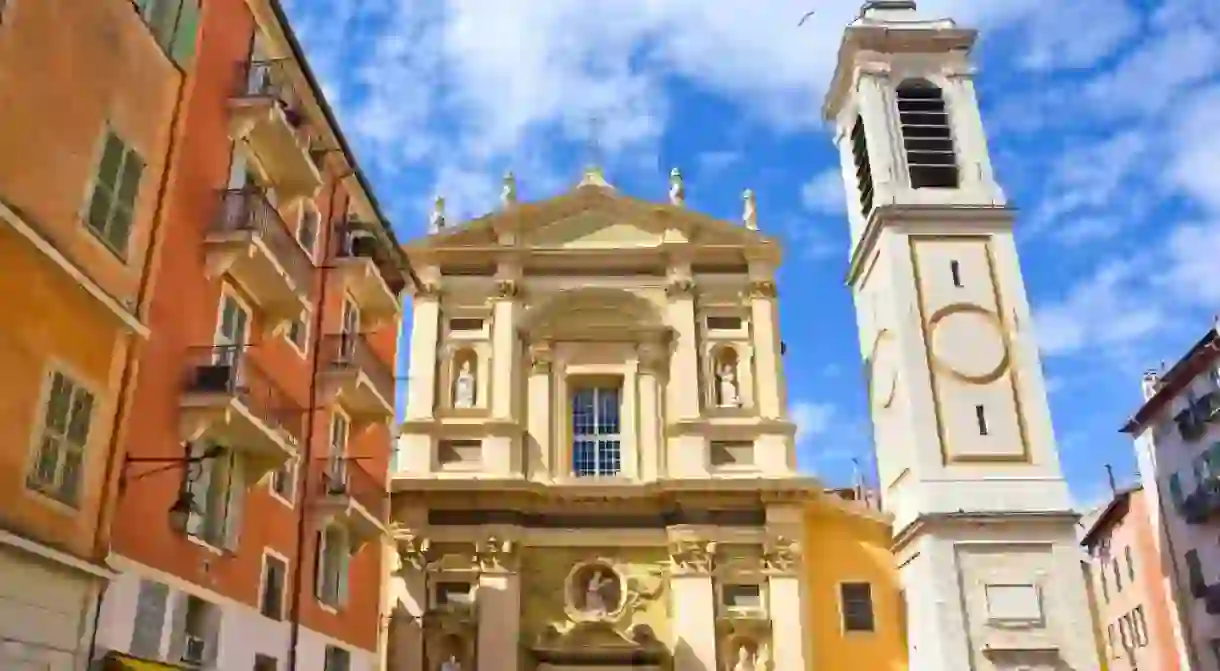The 10 Best Historical Places In Nice, France

With Nice having been home to the pre-Neanderthal man as early as 200,000 BC, it comes as no surprise that the stunning European city is full of beguiling historical spectacles. From palaces once inhabited by French nobility, to mysterious grottos previously occupied by cave people, history lovers can be sure to find an enchanting site dating from every time period here. We’ve narrowed it down to the top 10 historic sites in town, areas which will make for a truly cultural day of exciting exploration in Nice.
Castle Hill
Natural Feature

Boasting the best views over the city and its coastline, a hike up to Castle Hill will please both history buffs and those looking to take some jaw-dropping photos. Atop 300 feet of stairs, the journey to the castle is not for the faint-hearted, though visitors will be rewarded with seeing the fascinating ruins dating back to the 16th century, once a fortified structure built into a rocky hillside to prevent attacks. Subject to a number of sieges including one by François I of France and his troops in 1543, the castle was eventually destroyed by order of Louise XIV in 1706. Now only some of its walls remain, and visitors can take a fascinating tour around the ruins and enjoy its views over the Bay of Angels. The castle is set within pristine park grounds which feature a beautiful waterfall, a great setting for some leisurely strolling just minutes from the beach.
Cathédrale Sainte Réparate
Architectural Landmark
Built between 1650 and the beginning of the 18th century, Cathedrale Sainte Réparate takes pride of place in the heart of the Old Town. The first church built on the site was named Sainte-Marie du Château which was consecrated in 1049 before being demolished and redesigned, in order to enlarge the size of the space in conjunction with the city’s growing population. Modelled on the famous Church of Saint Susanna in Rome, the cathedral of today is an imposing structure which dominates the surrounding landscape, with a stunning multi-colored copula stretching 39 meters into the sky. The interior consists of a series of ten intricately decorated chapels dedicated to important saints and religious figures, all ornamented in the delicate Baroque style. Officially classified as a French monument historique in 1906, this tranquil and peaceful historical gem is a must-visit when exploring the Medieval old city.
Vieux Nice
Historical Landmark

Palais Lascaris
Museum
Opéra de Nice
Opera House

Monastère de Cimiez
Architectural Landmark, Historical Landmark
Today home to a small group of Franciscan friars, the Cimiez Monastery and Franciscan Museum carries its historical legacy into modern times. The monastery has a small museum attached to it, a venue which interestingly explains the daily life of French monks throughout the ages. This place is largely off the beaten tourist track, providing a unique insight in to Nice’s religious heritage in a more secluded area. Once home to the Shroud of Turin, a famous linen cloth believed by some christians to be the burial cloth of Christ, a small part of the museum is reserved for the cloth’s history, with it having been kept in Nice during the 14th century. Situated in the quiet historical neighborhood of Cimiez, and surrounded by an idyllic 500-year-old olive grove, the monastery provides a wonderful sense of peace and quiet. Afterwards visitors can explore the area’s ruined Roman arena, amphitheatre and thermal bath site, all of which date back to the 6th century.
Grotto du Lazaret
Historical Landmark
Monument aux Morts
Historical Landmark
Basilique Notre-Dame du Port
Architectural Landmark, Historical Landmark

Situated on Port Lympia within bustling urban surroundings, Notre Dame du Port church is a historical beacon which stands out against the backdrop of Nicoise modernity. Also known as the Church of the Immaculate Conception, the church was built in the mid 19th century and designed by architect Joseph Vernier in the Neoclassical style. Elegant and impressive to look at, with its four soaring granite columns dominating the front of the exterior, it is hard to believe that this church once collapsed in 1841 due to torrential rain. The venue was then rebuilt in 1845 before the facade was redesigned in the Greek style and the columns added by architect Jules Fèbvre, making it a collaboration of architectural triumphs, as well as the influential building of its time. On the inside a peaceful and contemplative space featuring a host of beautiful ornamentations and a large master-alter, Notre Dame du Port is one of the city’s greatest monuments.
Le Muséum d'Histoire Naturelle
Architectural Landmark, Museum
The oldest museum in Nice, having been founded in 1846, Le Muséum d’Histoire Naturelle is somewhat of a historical artifact in itself. Founded by botanists Jean Baptiste Barla and Jean Baptiste Verany, the venue was established with the help of scientist Antoine Risso, the famous author of the Ichthyologie de Nice, a book explaining the city’s marine life. Today the museum is a series of geological, zoological and plant collections exhibiting the earth’s habitats from Africa to South America. Those interested in local natural history can view the venue’s particularly extensive collection of plants and animals, all sourced from the Mediterranean region surrounding Nice. The museum presents specimens of animals unique to the region including wolves, deer and wild boars, and it highlights both the importance of and the challenges faced by the area’s conservation projects. With a number of regularly changing exhibitions and ongoing research projects, the museum showcases a contemporary relevance as well as an appreciation of its rich heritage, and as such makes itself an unmissable local gem.
France Trips and Tours
Architectural Landmark

Planning a trip to France? See the best of France on a multi-day trip, from art tours in Paris to wine tasting in the Loire Valley and coastal cruising along the South of France.













